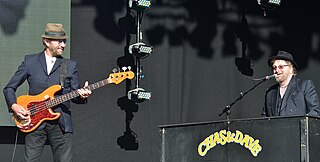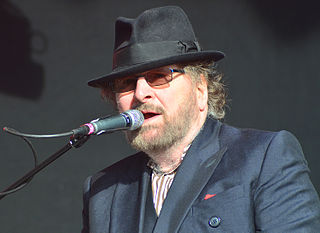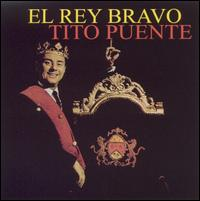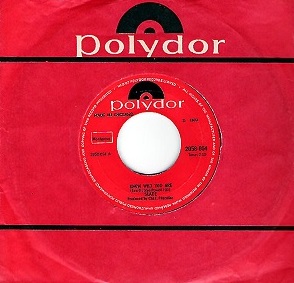Pub rock is a style of Australian rock and roll popular throughout the 1970s and 1980s, and that was still influencing contemporary Australian music in the 2000s. The term came from the venues where most of these bands originally played — inner-city and suburban pubs. These often noisy, hot, small and crowded venues were not always ideal as music venues and favoured loud, simple songs based on drums and electric guitar riffs.
Skiffle is a genre of folk music with influences from American folk music, blues, country, bluegrass, and jazz, generally performed with a mixture of manufactured and homemade or improvised instruments. Originating as a form in the United States in the first half of the 20th century, it became extremely popular in United Kingdom in the 1950s, where it was played by such artists as Lonnie Donegan, The Vipers Skiffle Group, Ken Colyer, and Chas McDevitt. Skiffle was a major part of the early careers of some musicians who later became prominent jazz, pop, blues, folk, and rock performers, The Quarrymen and Rory Gallagher among them. It has been seen as a critical stepping stone to the second British folk revival, the British blues boom, and the British Invasion of American popular music.
A cover band is a band that plays songs recorded by someone else, sometimes mimicking the original as accurately as possible, and sometimes re-interpreting or changing the original. These remade songs are known as cover songs. New or unknown bands often find the format marketable for smaller venues, such as pubs, clubs or parks. The bands also perform at private events, for example, weddings and birthday parties, and may be known as a wedding band, party band, function band or band-for-hire. A band whose covers consist mainly of songs that were chart hits is often called a top 40 band. Some bands, however, start as cover bands, then grow to perform original material. For example, the Rolling Stones released three albums consisting primarily of covers and then recorded one with their own original material.
Rhumba, also known as ballroom rumba, is a genre of ballroom music and dance that appeared in the East Coast of the United States during the 1930s. It combined American big band music with Afro-Cuban rhythms, primarily the son cubano, but also conga and rumba. Although taking its name from the latter, ballroom rumba differs completely from Cuban rumba in both its music and its dance. Hence, authors prefer the Americanized spelling of the word (rhumba) to distinguish between them.

Johnny Clarke is a Jamaican reggae musician, best known for his recordings with producer Bunny Lee in the 1970s.
Kal Mann was an American lyricist. He is best known for penning the words to Elvis Presley's "Teddy Bear", plus "Butterfly", a hit for both Charlie Gracie and Andy Williams, and "Let's Twist Again", sung by Chubby Checker, which won the 1962 Grammy Award for Best Rock & Roll Recording.

Chas & Dave were a British pop rock duo, formed in London by Chas Hodges and Dave Peacock.

The cha-cha-cha, is a dance of Cuban origin. It is danced to the music of the same name introduced by the Cuban composer and violinist Enrique Jorrin in the early 1950s. This rhythm was developed from the danzón-mambo. The name of the dance is an onomatopoeia derived from the shuffling sound of the dancers' feet when they dance two consecutive quick steps that characterize the dance.

Dave Cousins is an English musician who is the leader, singer and most-active songwriter of Strawbs since 1967.

Charles Nicholas Hodges was an English musician and singer who was the lead vocalist of musical duo Chas & Dave.

A music venue is any location used for a concert or musical performance. Music venues range in size and location, from a small coffeehouse for folk music shows, an outdoor bandshell or bandstand or a concert hall to an indoor sports stadium. Typically, different types of venues host different genres of music. Opera houses, bandshells, and concert halls host classical music performances, whereas public houses ("pubs"), nightclubs, and discothèques offer music in contemporary genres, such as rock, dance, country, and pop.
Pachanga is a genre of music which is described as a mixture of son montuno and merengue and has an accompanying signature style of dance. This type of music has a festive, lively style and is marked by jocular, mischievous lyrics. Pachanga originated in Cuba in the 1950s and played an important role in the evolution of Caribbean style music as it is today. Considered a prominent contributor to the eventual rise of salsa, Pachanga itself is an offshoot of Charanga style music. Very similar in sound to Cha-Cha but with a notably stronger down-beat, Pachanga once experienced massive popularity all across the Caribbean and was brought to the United States by Cuban immigrants post World War II. This led to an explosion of Pachanga music in Cuban music clubs that influenced Latin culture in the United States for decades to come.
Australia is home to several large immigrant communities from every continent in the world.

Old New Borrowed and Blue is the fourth studio album by the British rock group Slade. It was released on 15 February 1974 and reached No. 1 on the UK Albums Chart. It has been certified Gold by BPI. The album was produced by Chas Chandler. For the album, Slade attempted to begin breaking away from their usual rock formula. For example, the singles "My Friend Stan" and "Everyday" were piano-led and did not have the typical "Slade" sound.

Dance music is music composed specifically to facilitate or accompany dancing. It can be either a whole piece or part of a larger musical arrangement. In terms of performance, the major categories are live dance music and recorded dance music. While there exist attestations of the combination of dance and music in ancient times, the earliest Western dance music that we can still reproduce with a degree of certainty are old-fashioned dances. In the Baroque period, the major dance styles were noble court dances. In the classical music era, the minuet was frequently used as a third movement, although in this context it would not accompany any dancing. The waltz also arose later in the classical era. Both remained part of the romantic music period, which also saw the rise of various other nationalistic dance forms like the barcarolle, mazurka, ecossaise, ballade and polonaise.

"Oye Cómo Va" is a 1962 cha-cha-chá by Tito Puente, originally released on El Rey Bravo. The song achieved worldwide popularity in 1970, when it was recorded by American rock group Santana for their album Abraxas. This version was released as a single in 1971, reaching number 13 on the Billboard Hot 100, number 11 on the Billboard Easy Listening survey, and number 32 on the R&B chart. The block chord ostinato pattern that repeats throughout the song was most likely borrowed by Puente from Cachao's 1957 mambo "Chanchullo", which was recorded by Puente in 1959.

"Gertcha" is a song from Chas & Dave's 1979 album Don't Give a Monkey's, which was released as a single in May 1979 and entered the UK Singles Chart at No. 67. The song stayed in the charts for 8 weeks and peaked at number No. 20 on 30 June 1979. The song was used as the music behind a notable television commercial for Courage Bitter.

"Sit on My Knee" is a song written by Dave Larkin, the lead singer of Dallas Crane. Dallas Crane recorded a version for their second album, Twenty Four Seven. (2000)

"Know Who You Are" is a song by the British rock band Slade, released in 1970 as a second and final single from their second studio album Play It Loud. The song was written by Jim Lea, Noddy Holder, Don Powell and Dave Hill, and produced by Chas Chandler. It failed to make an appearance in the UK chart.










